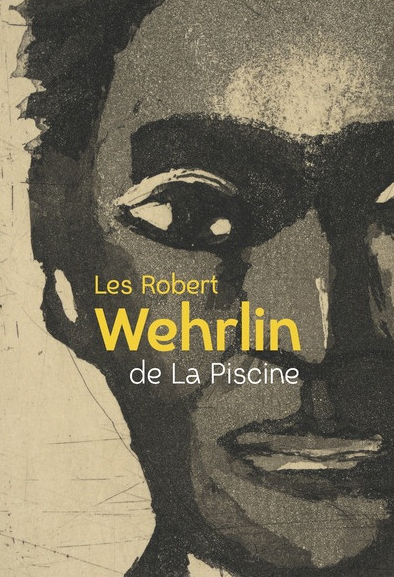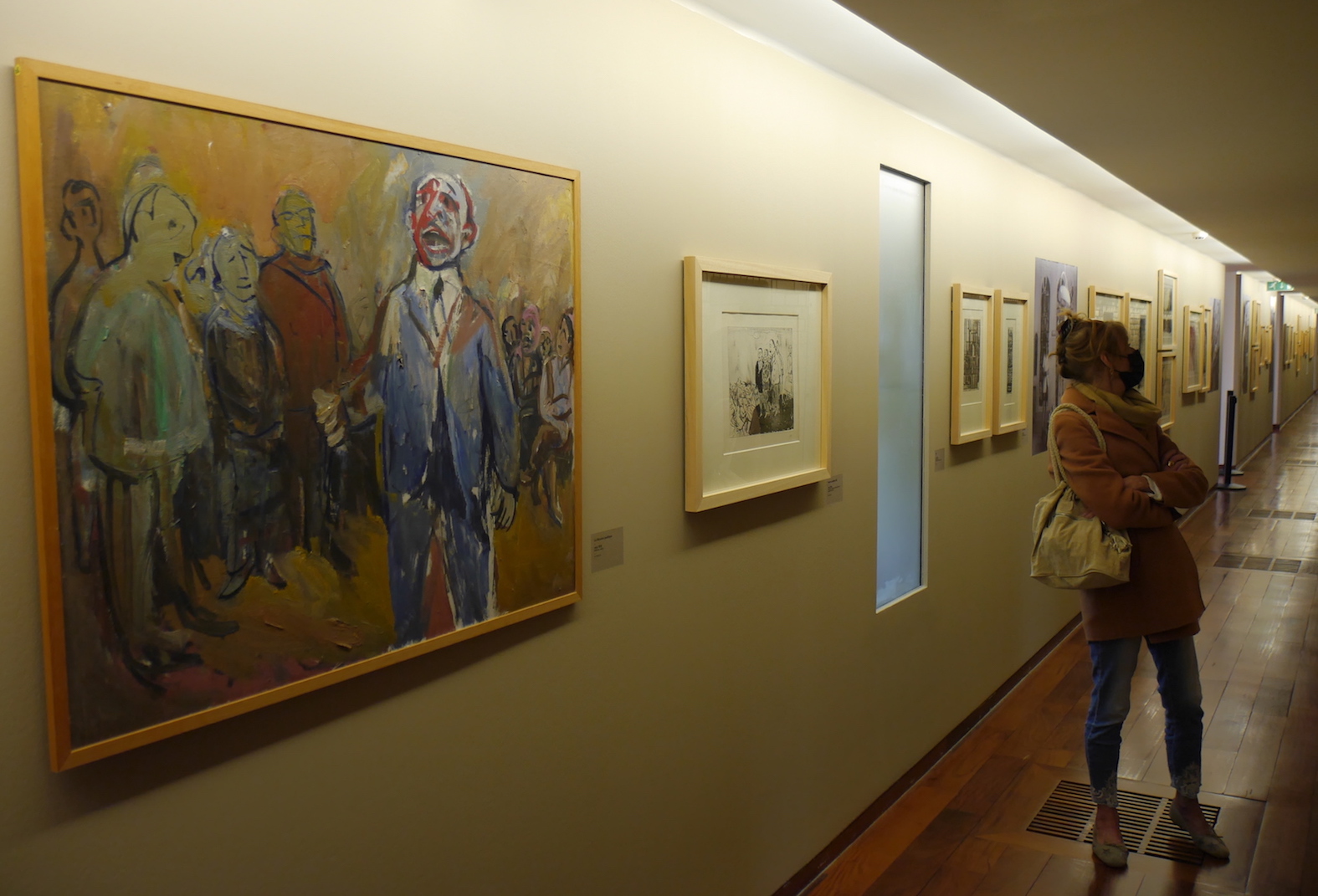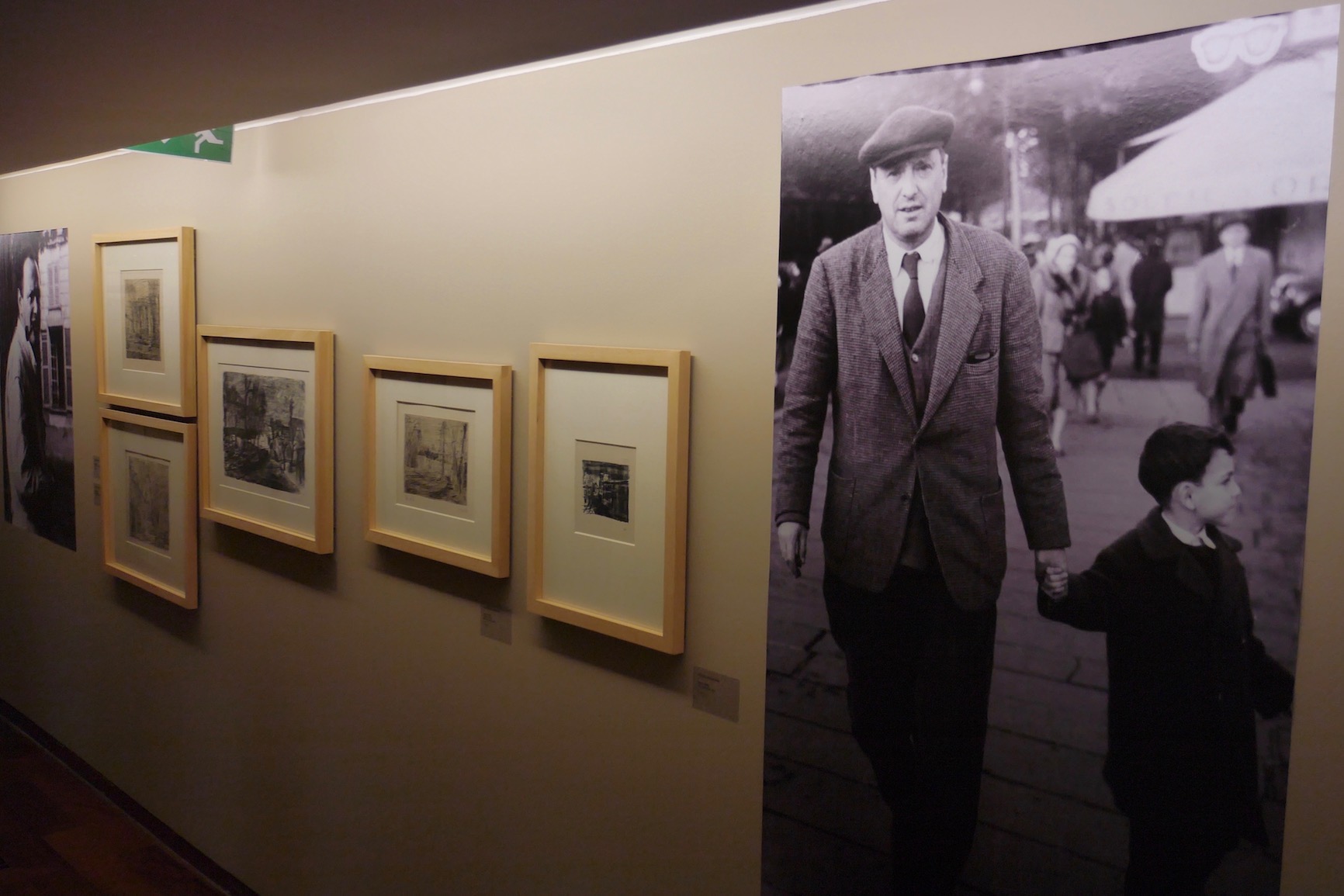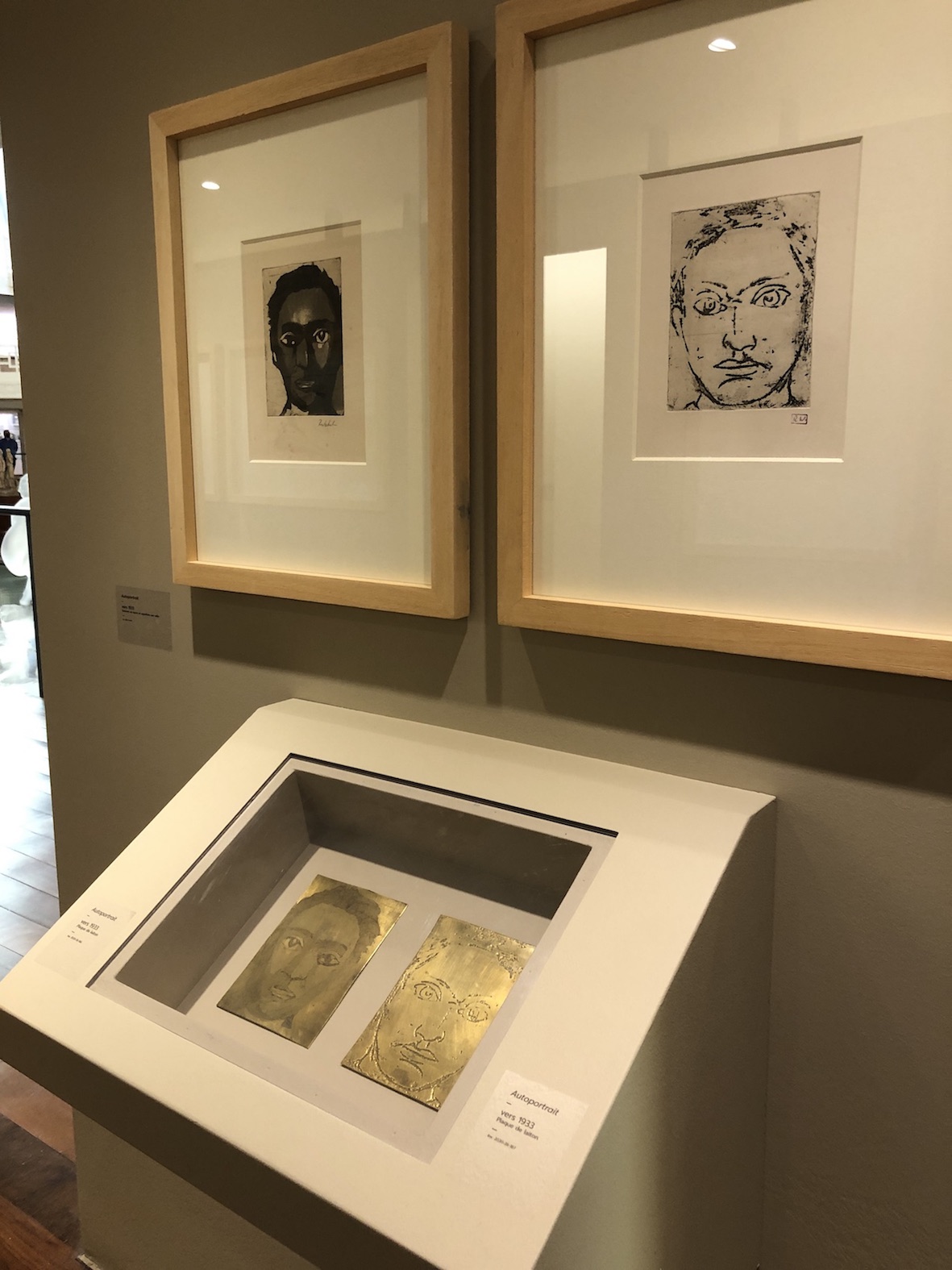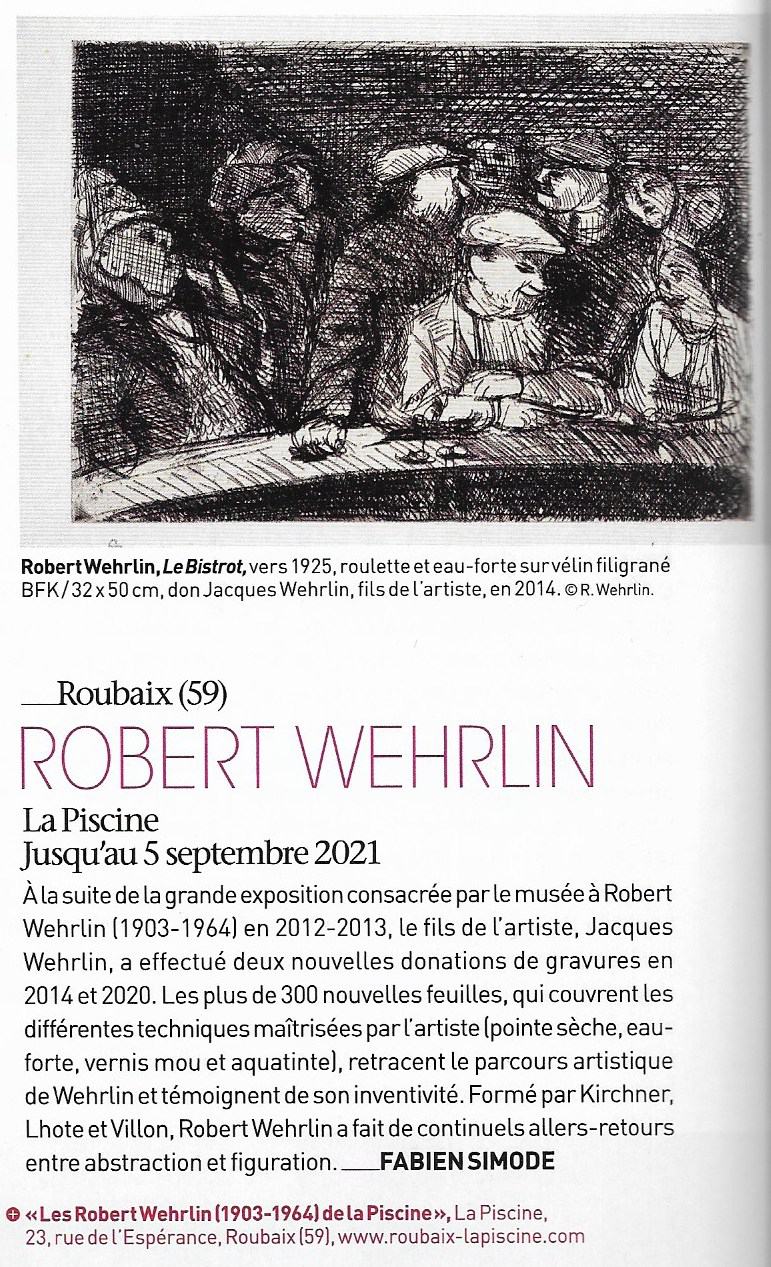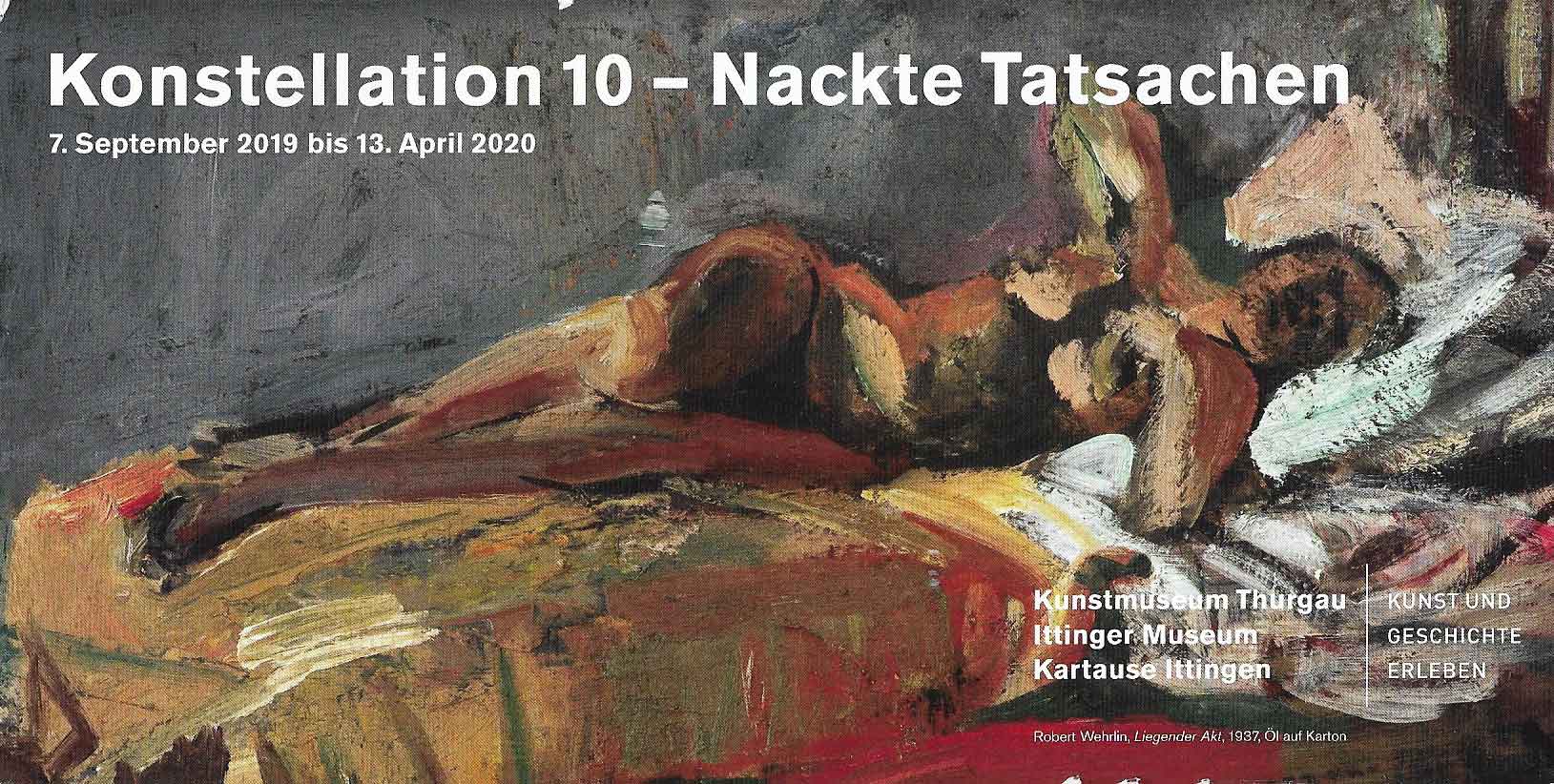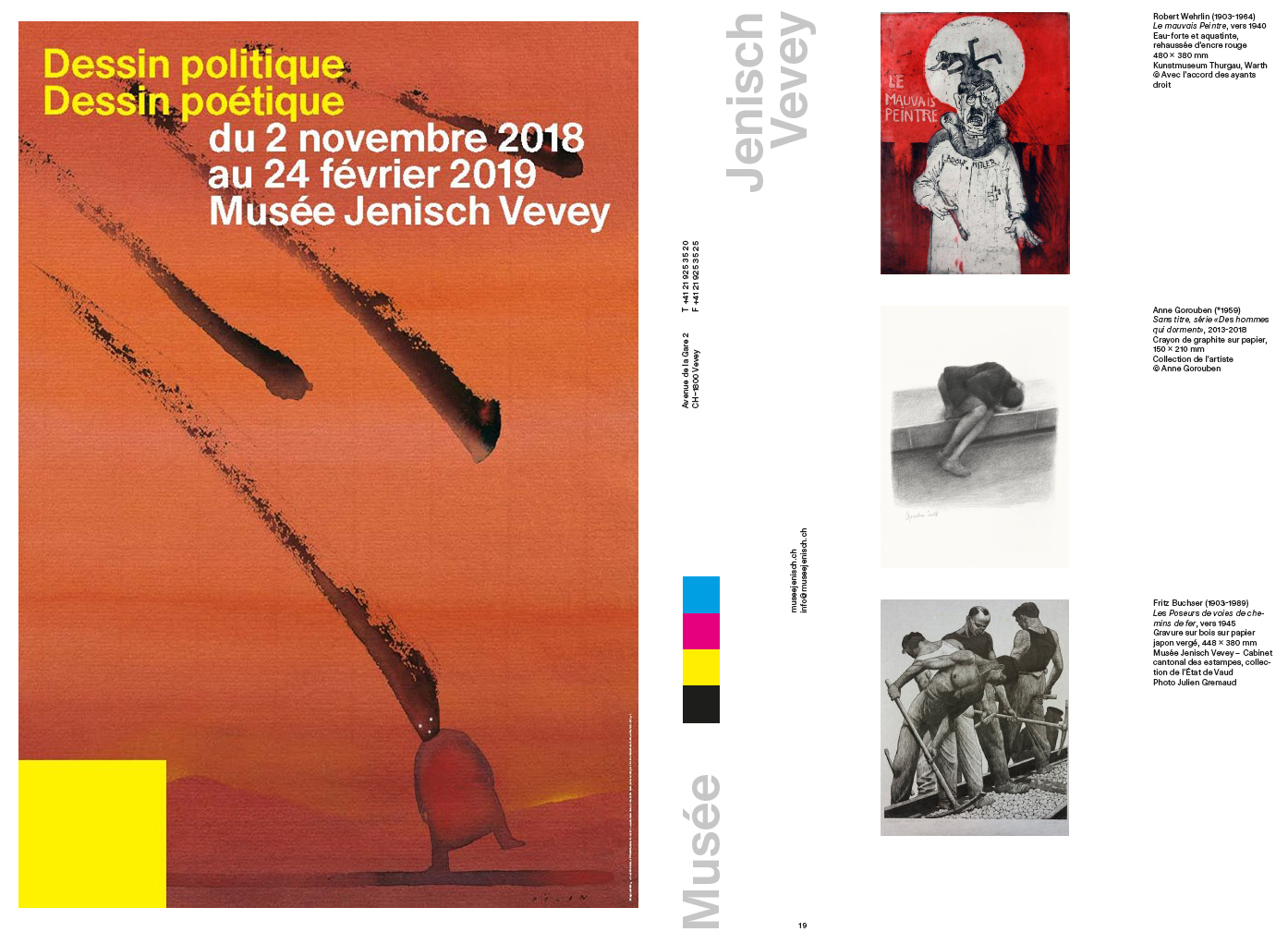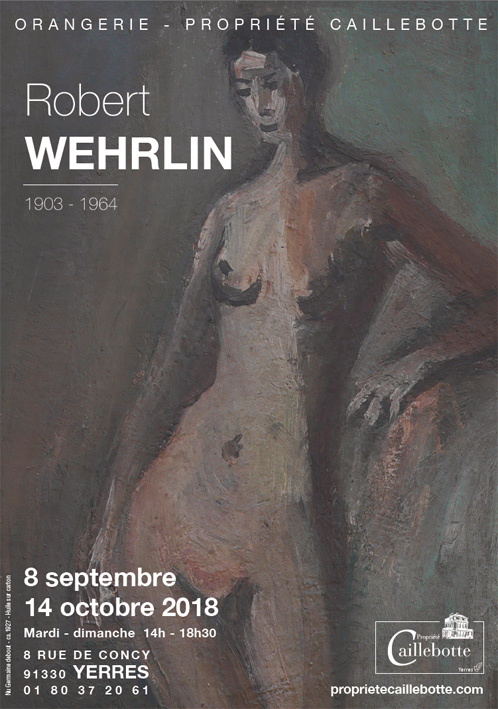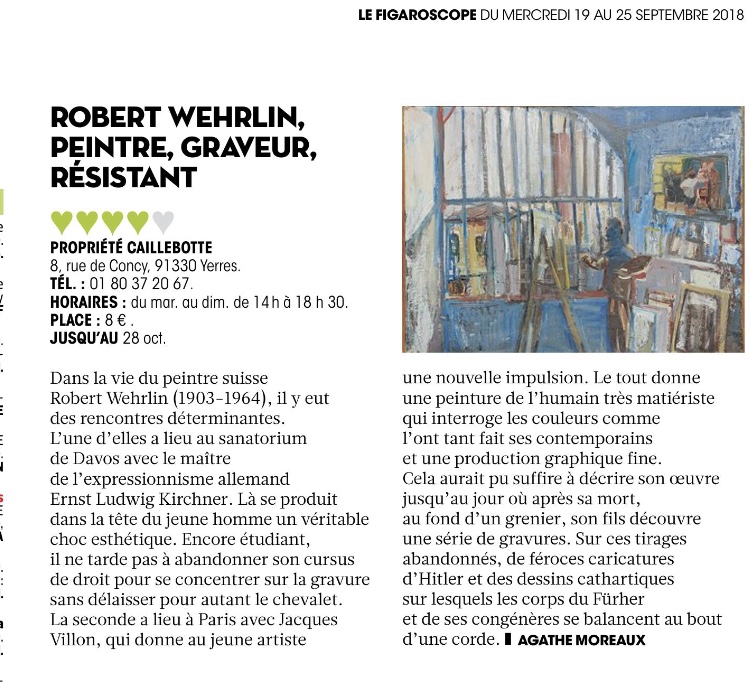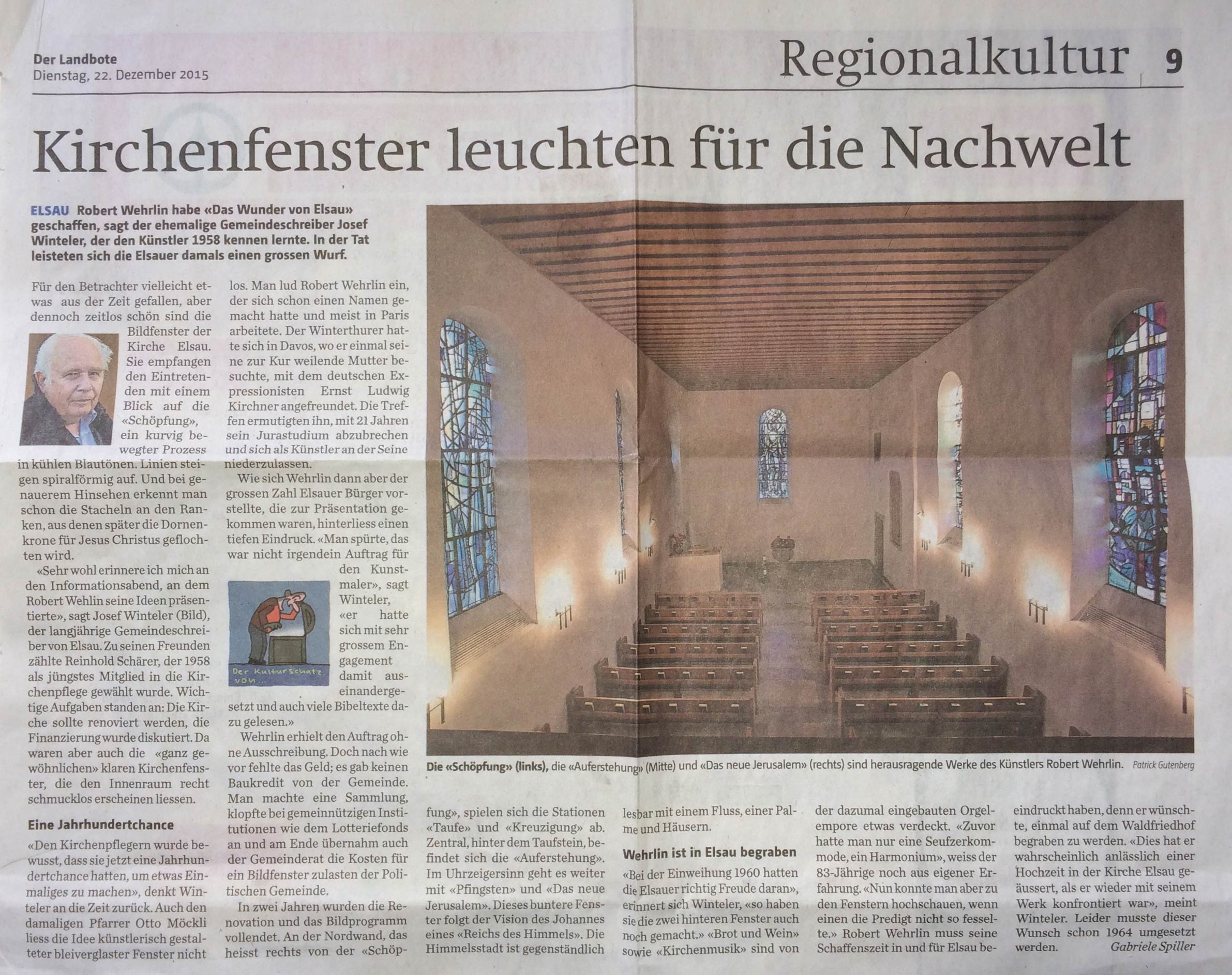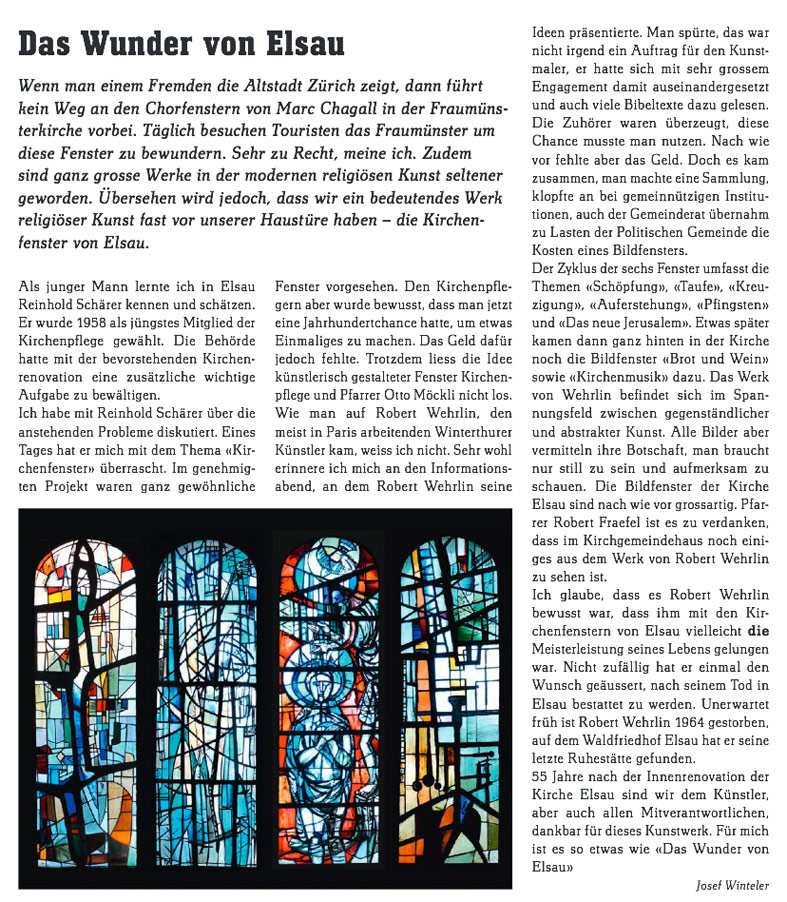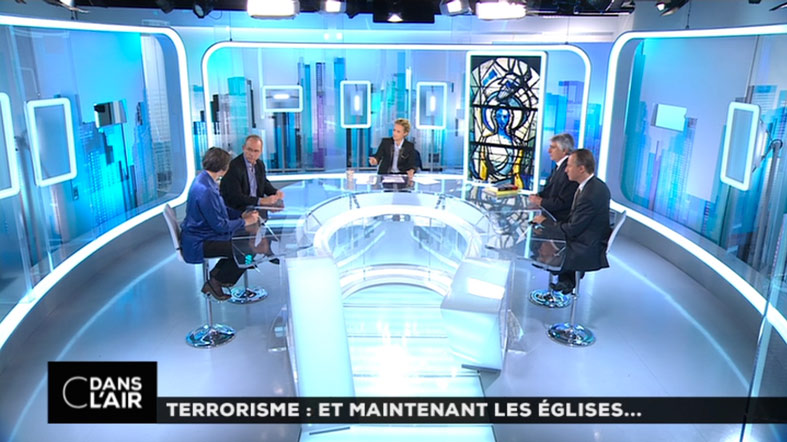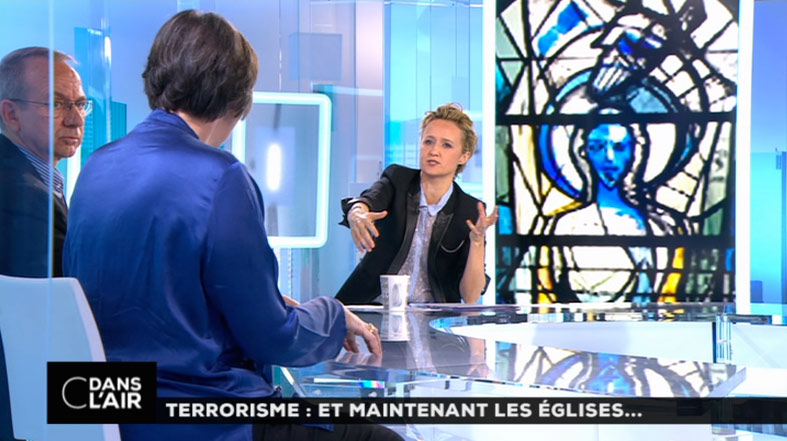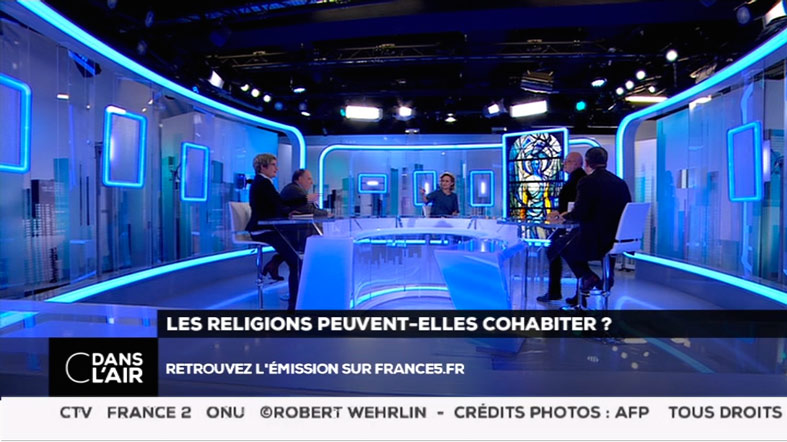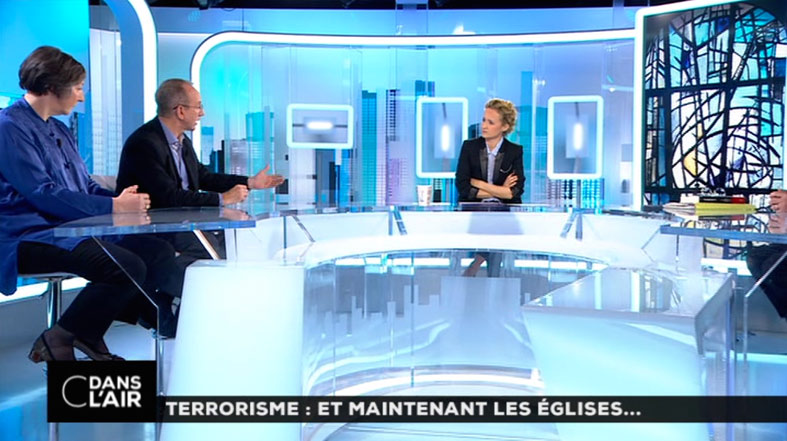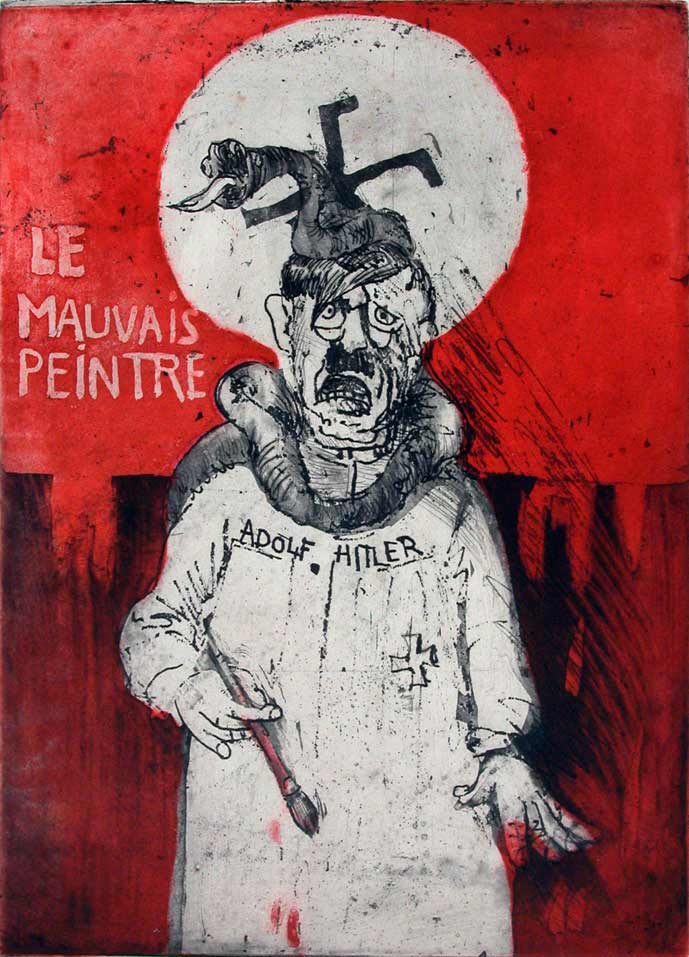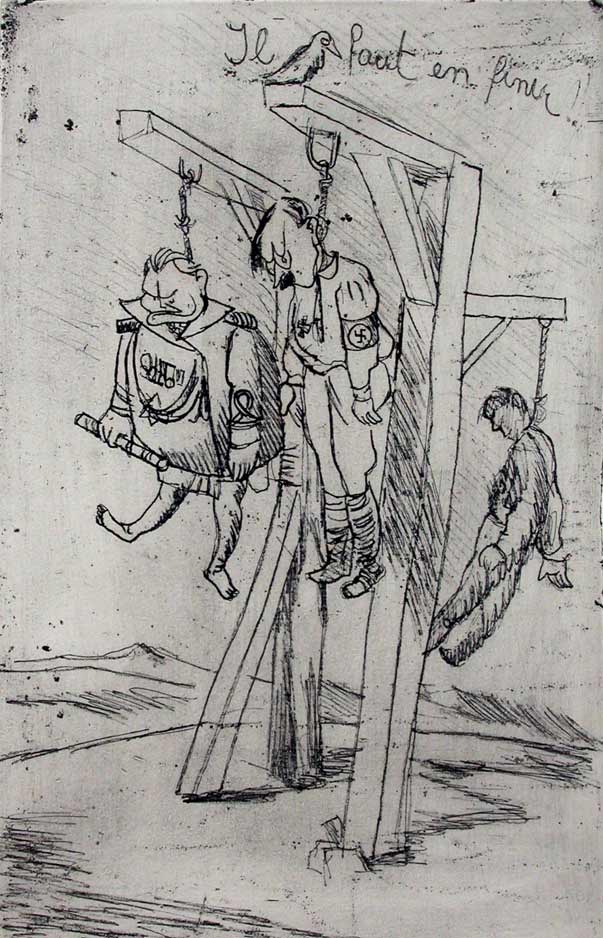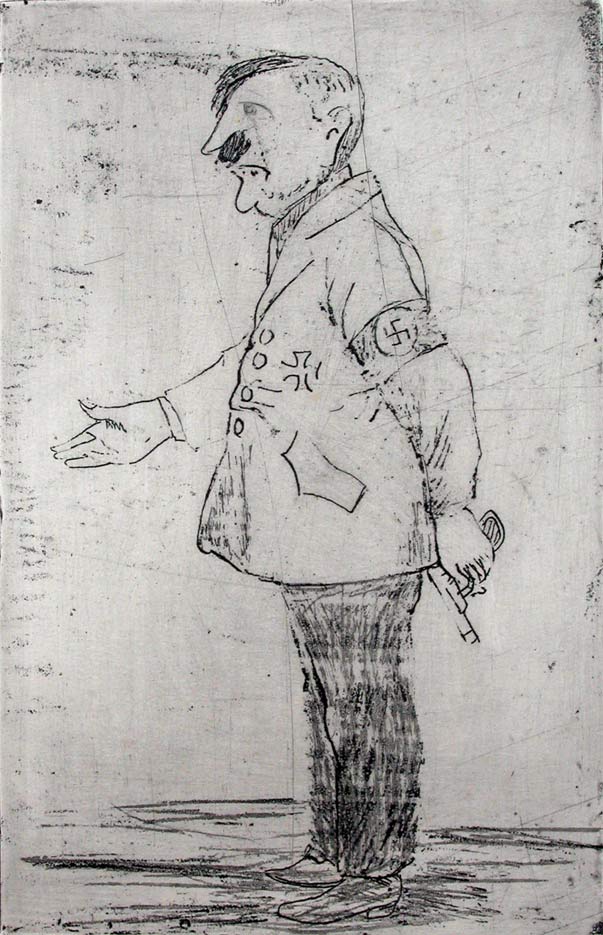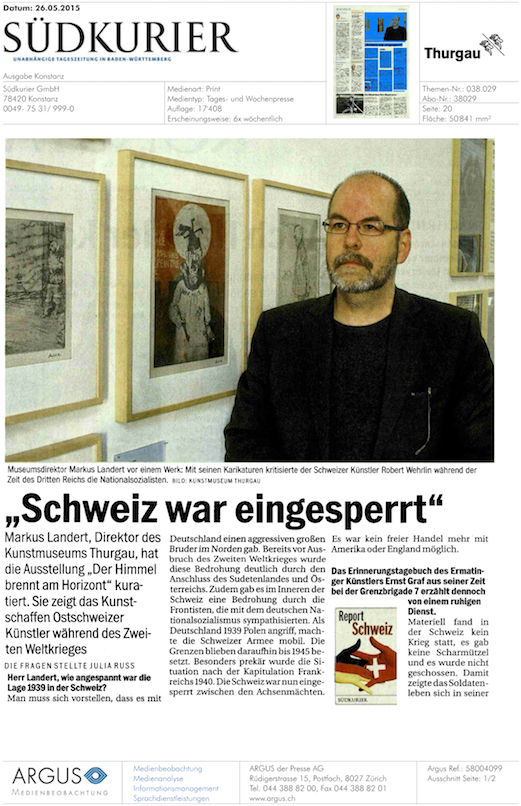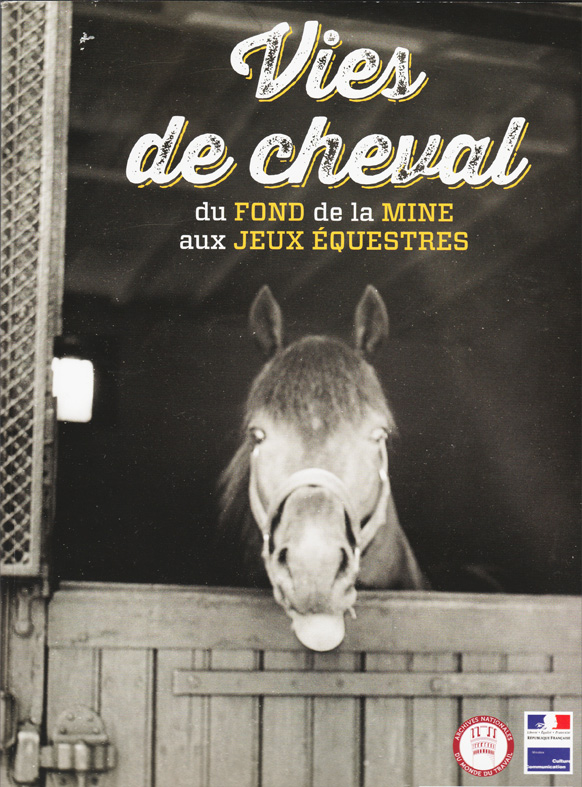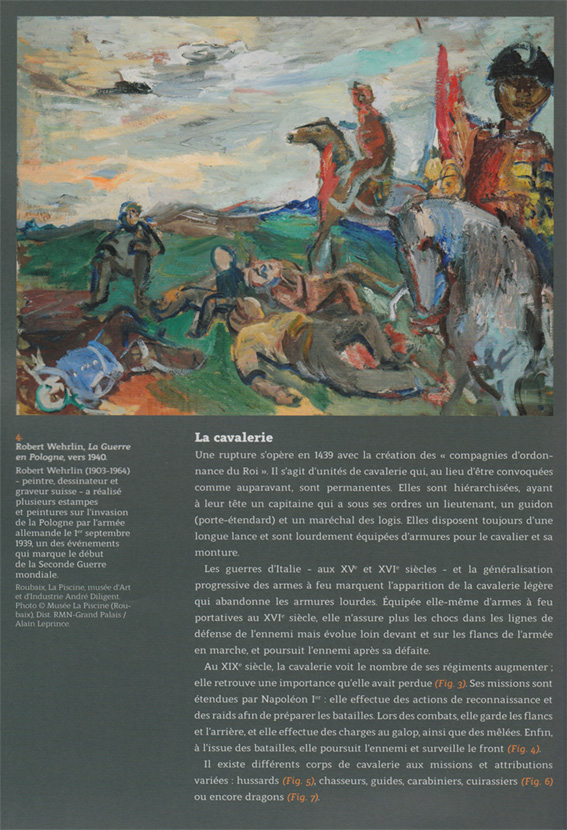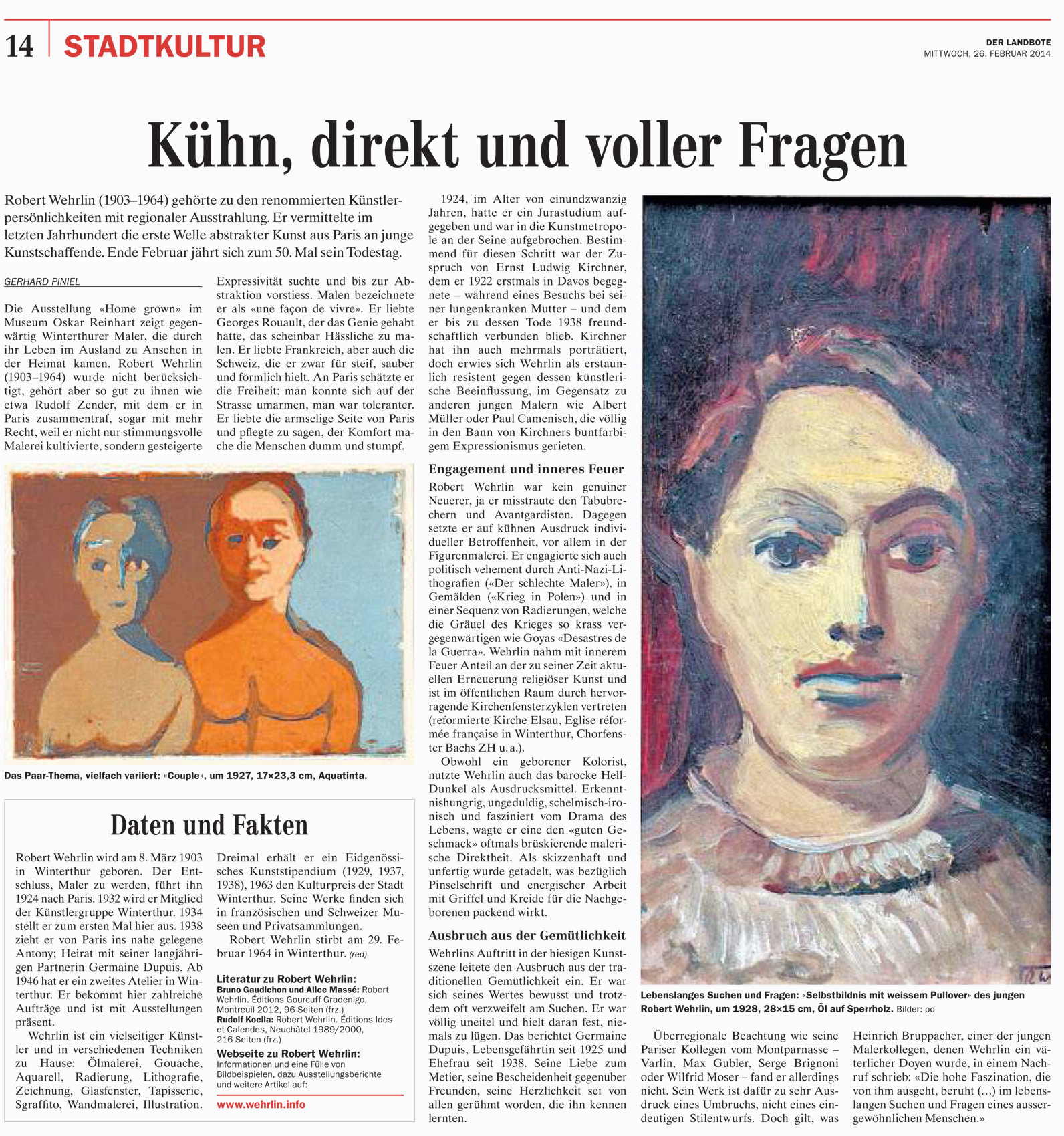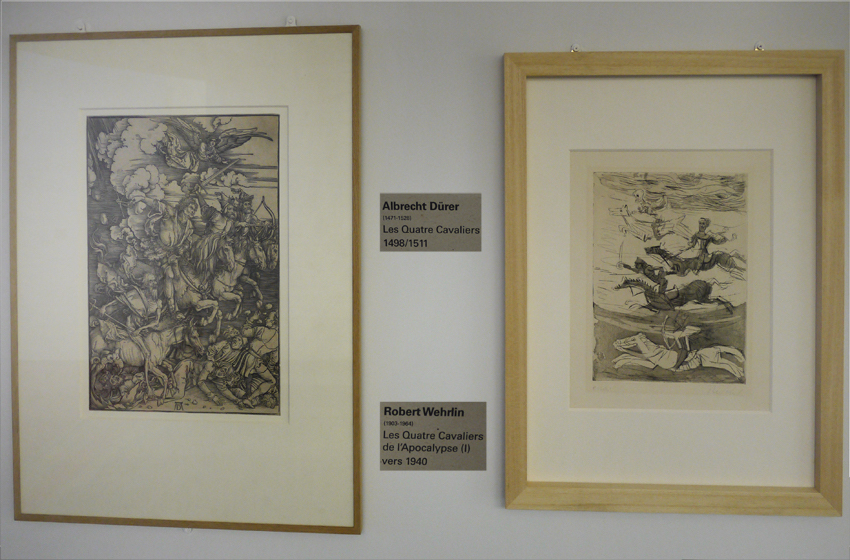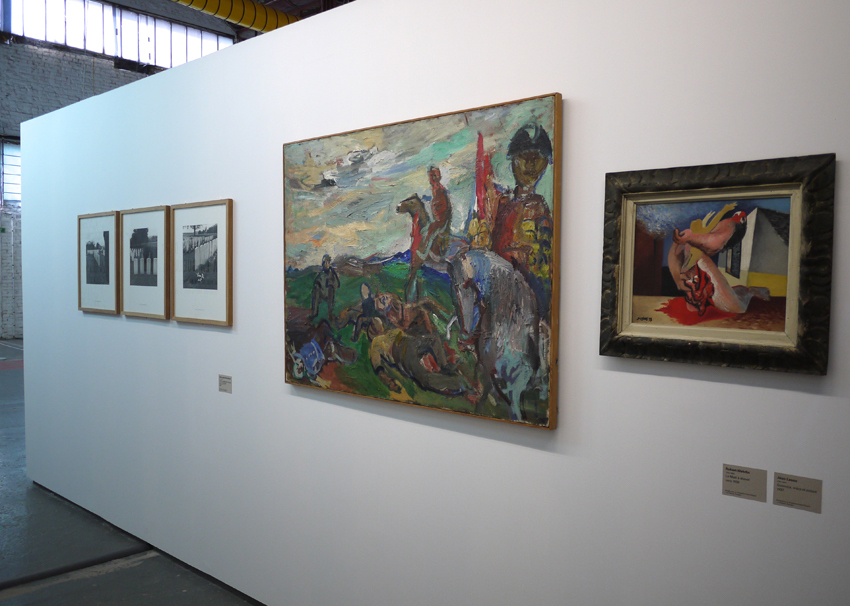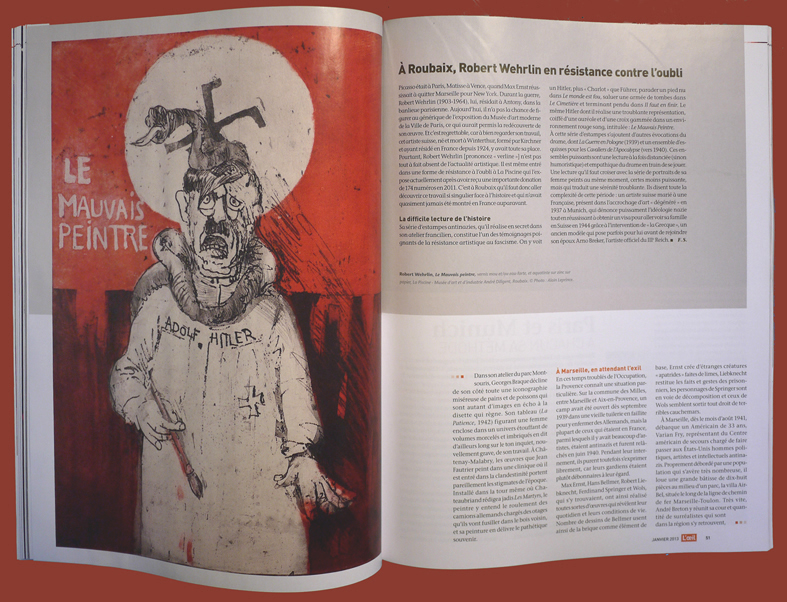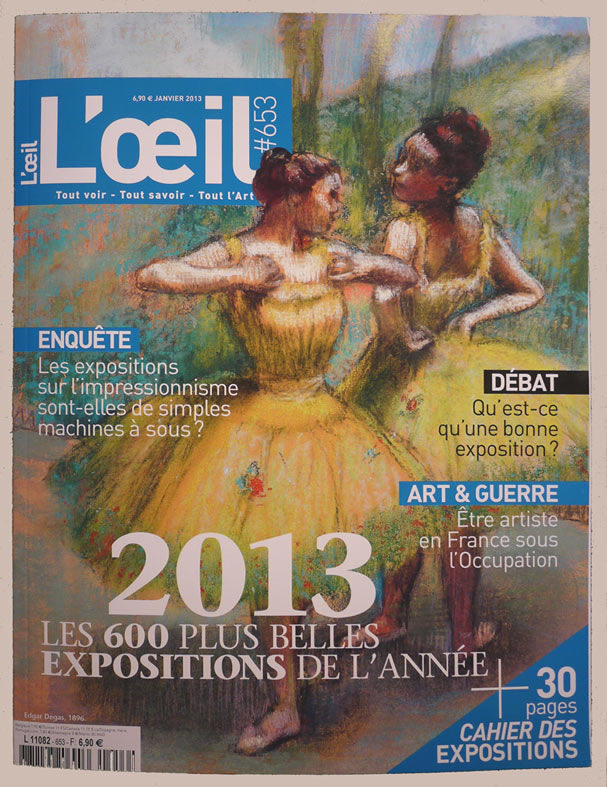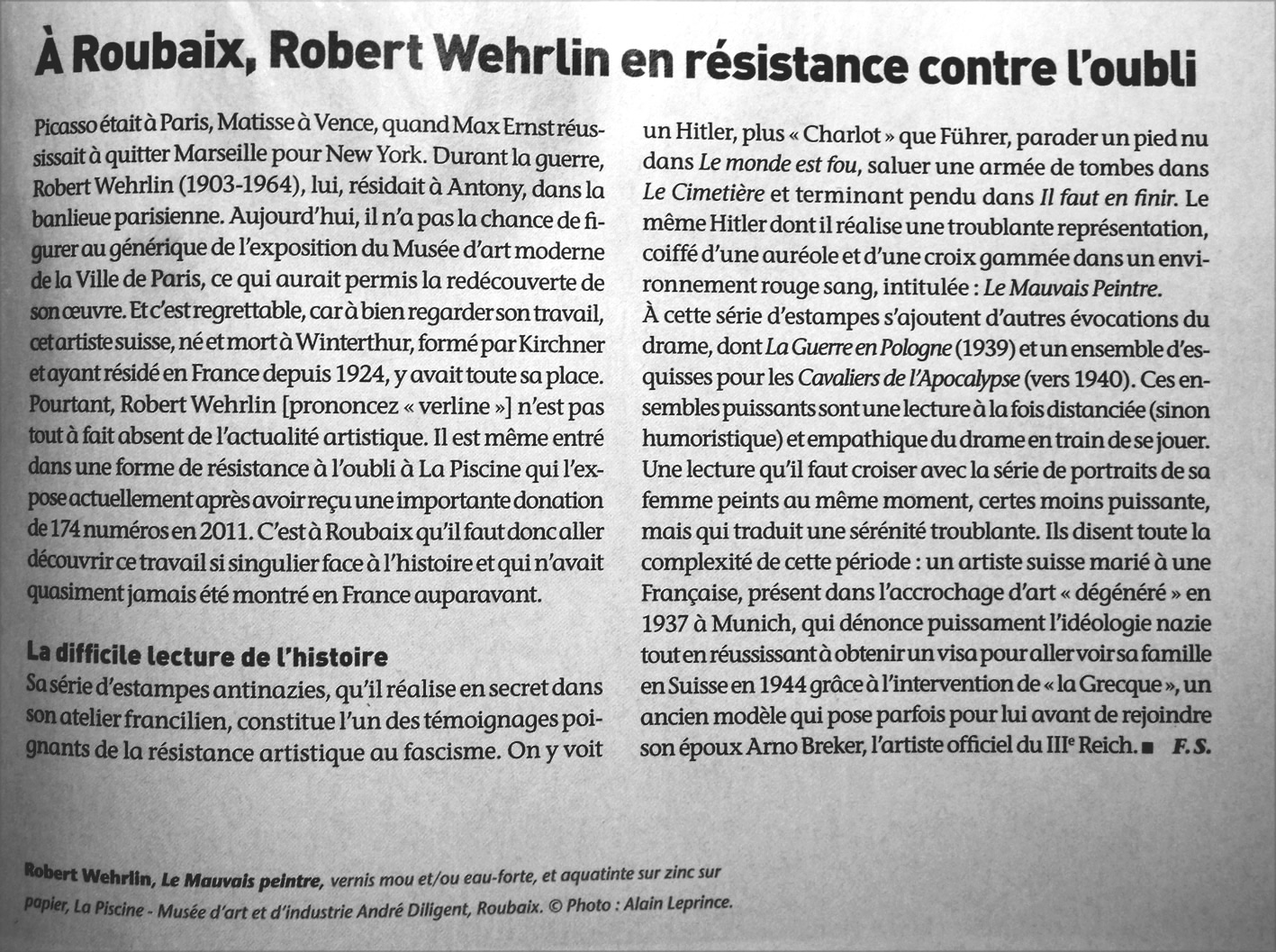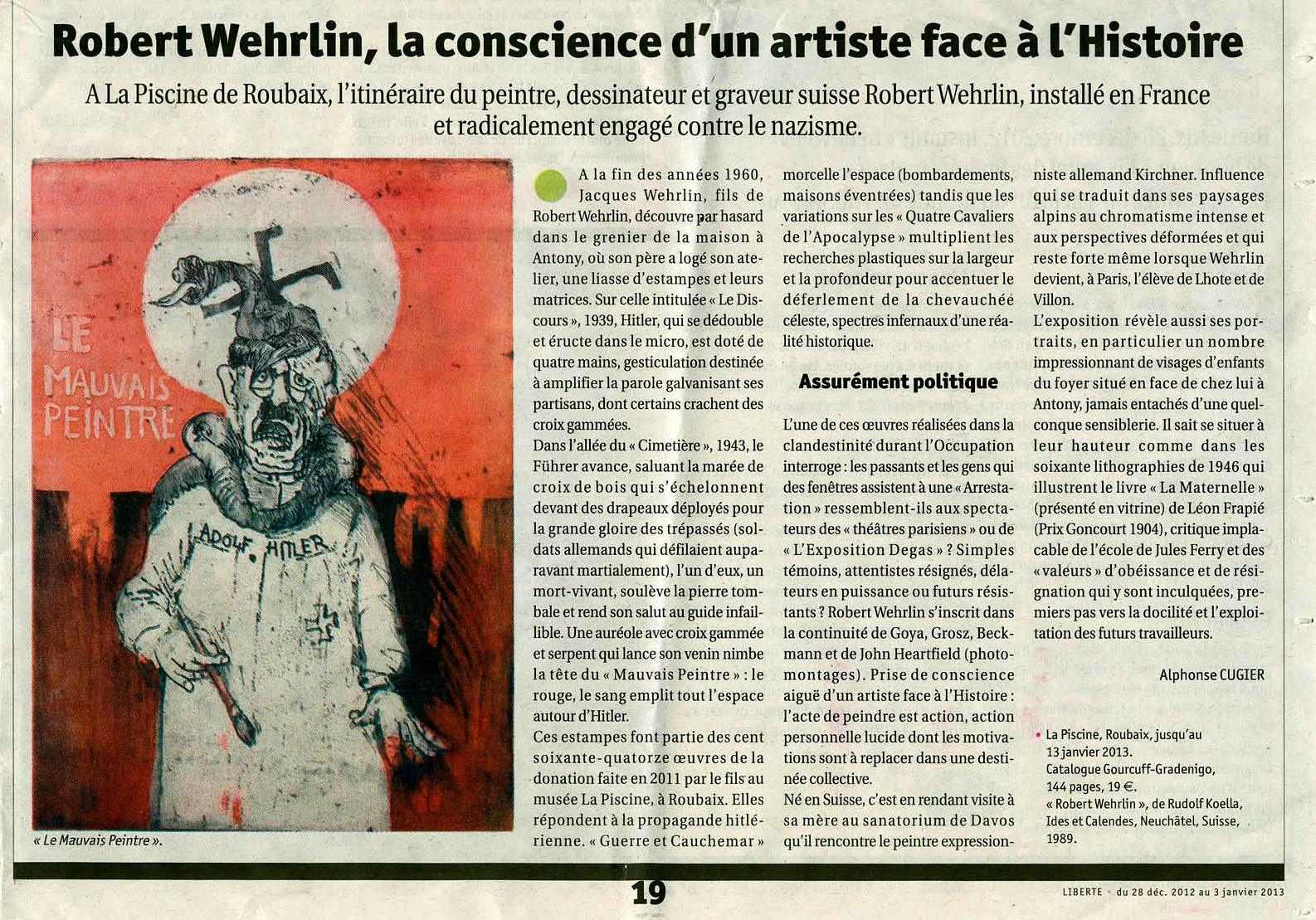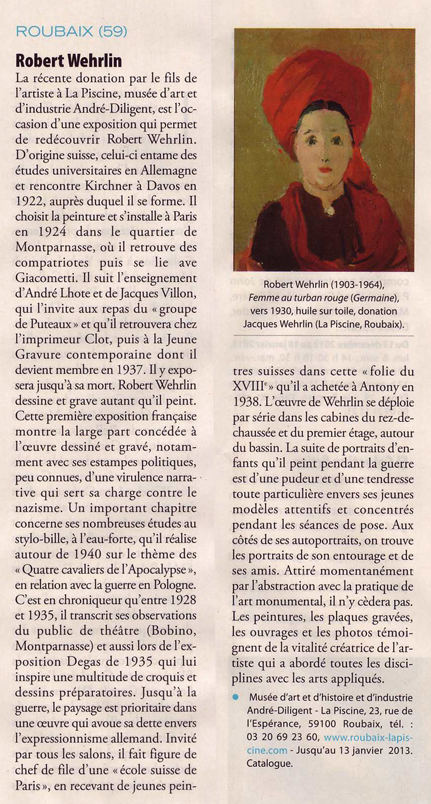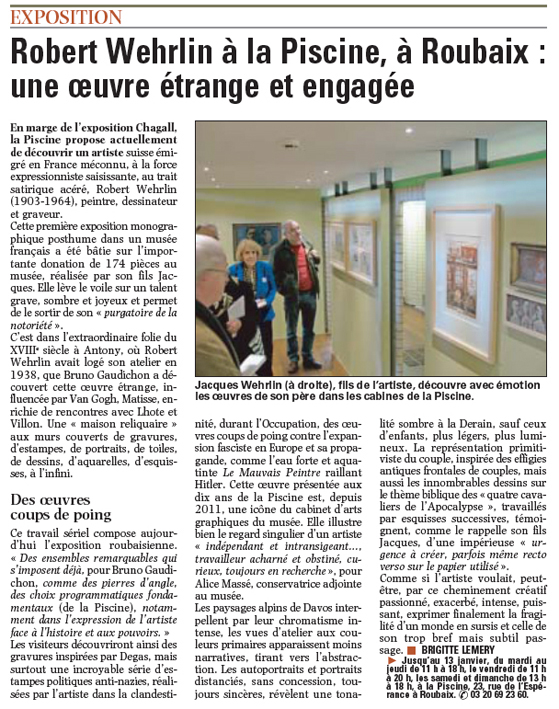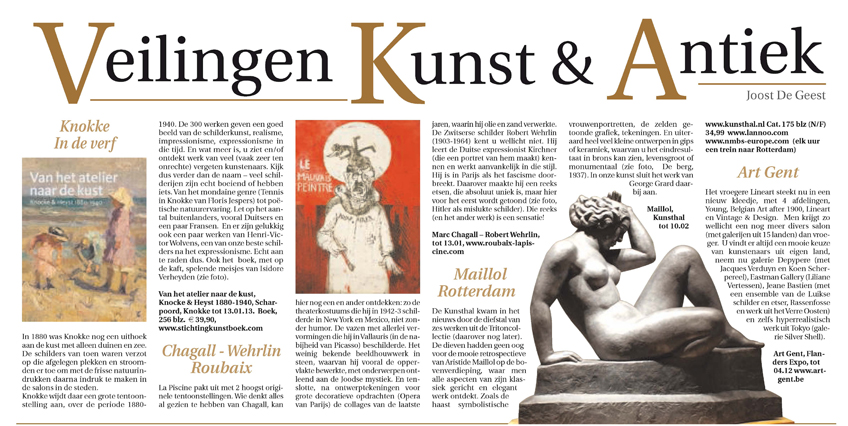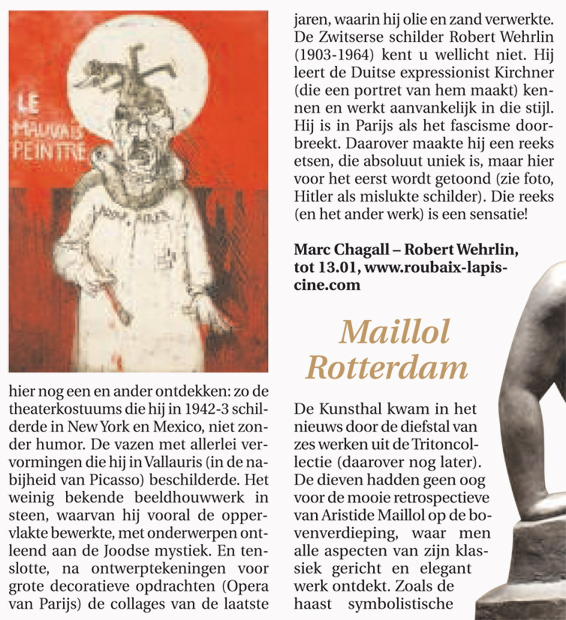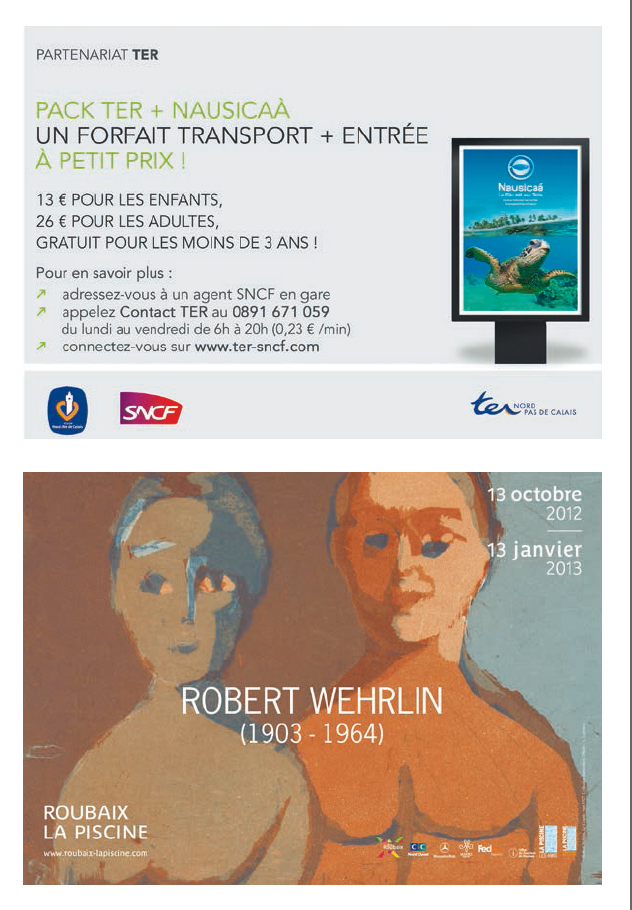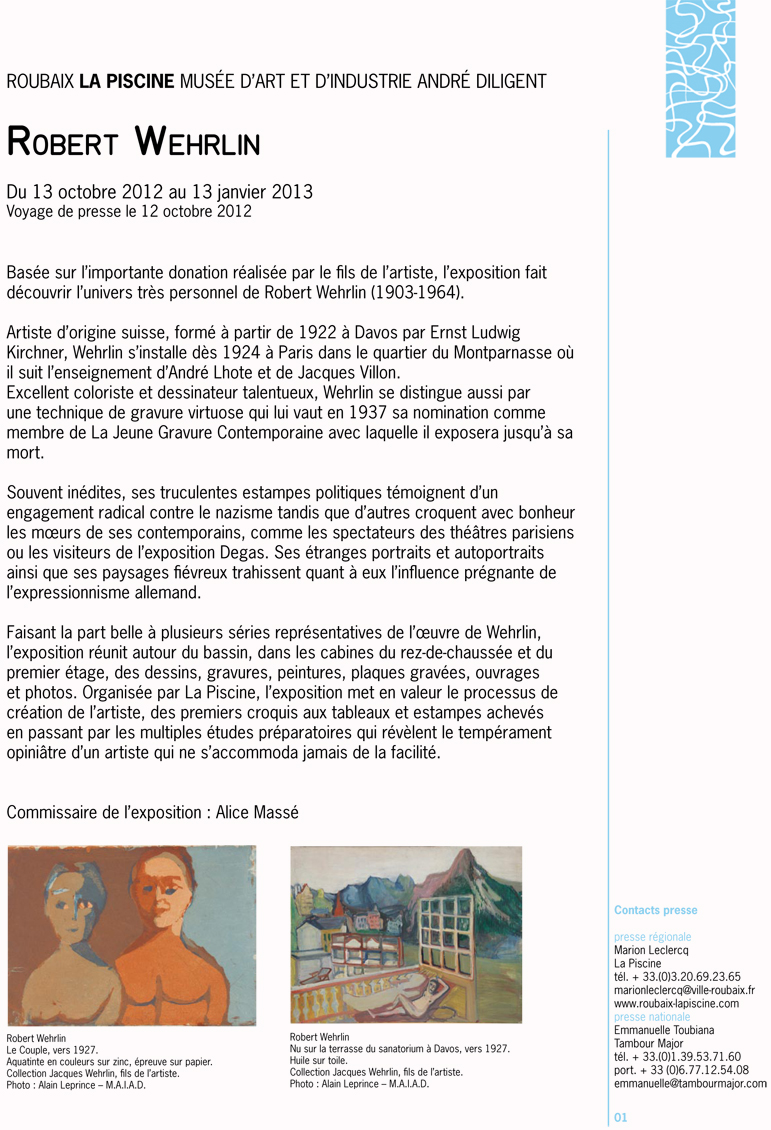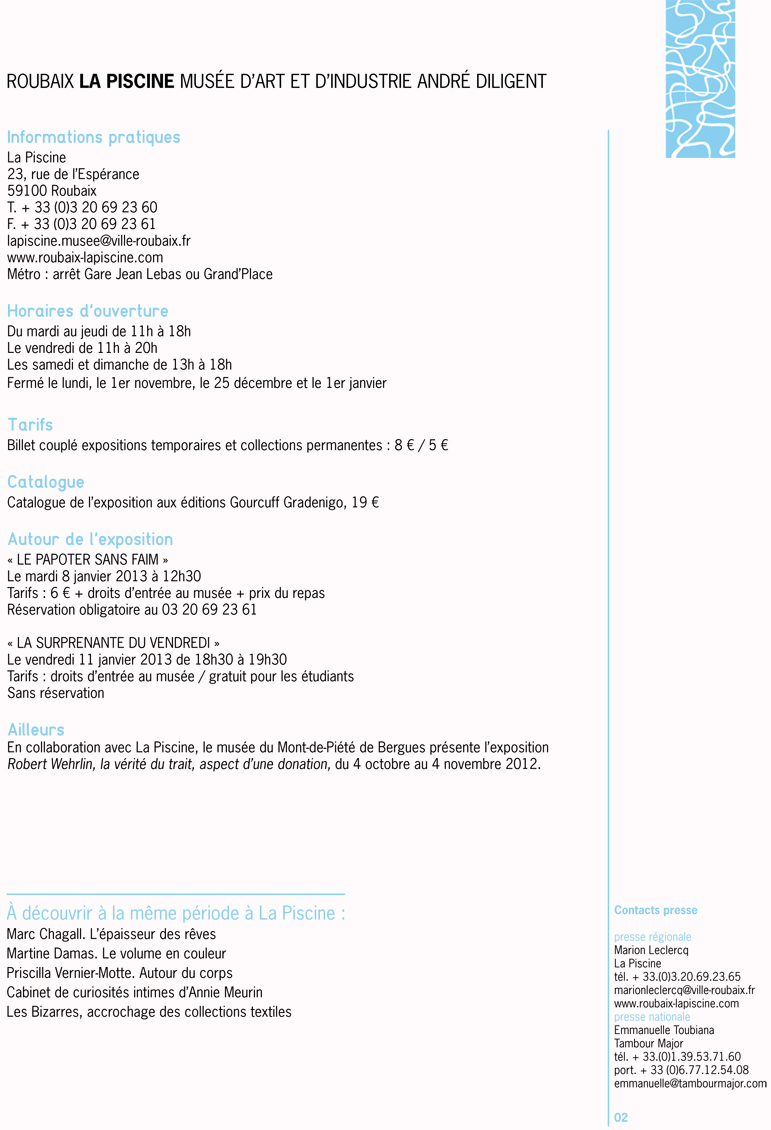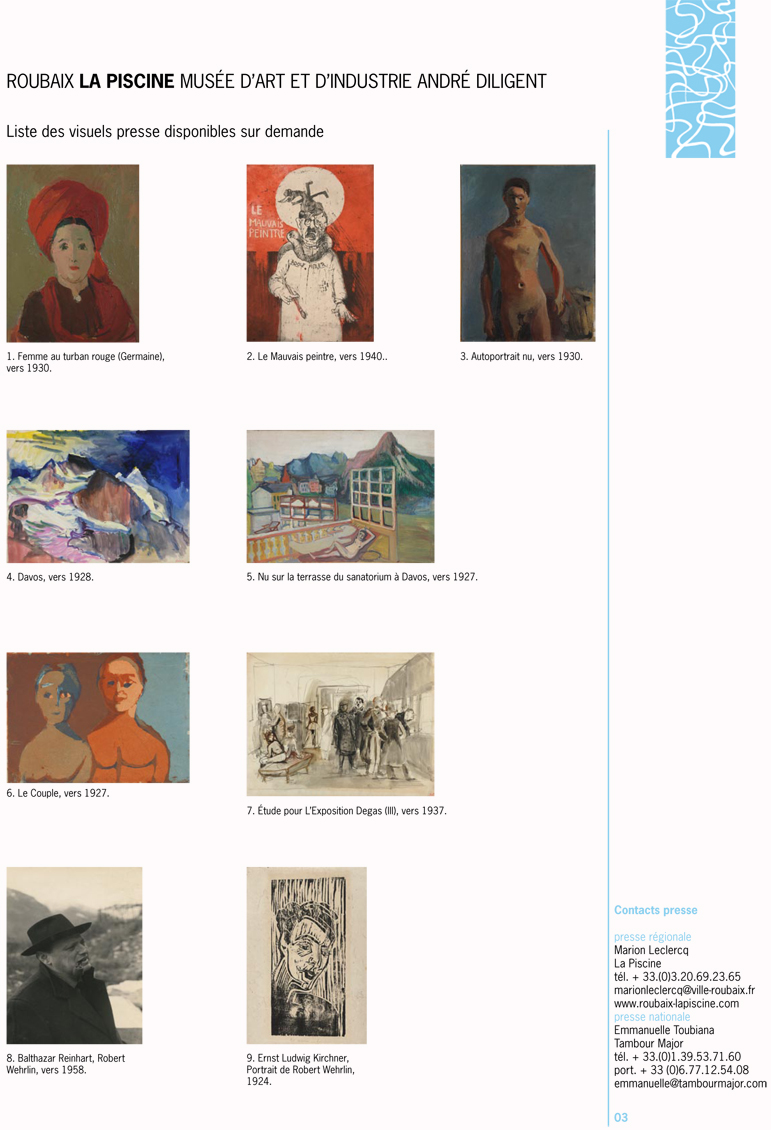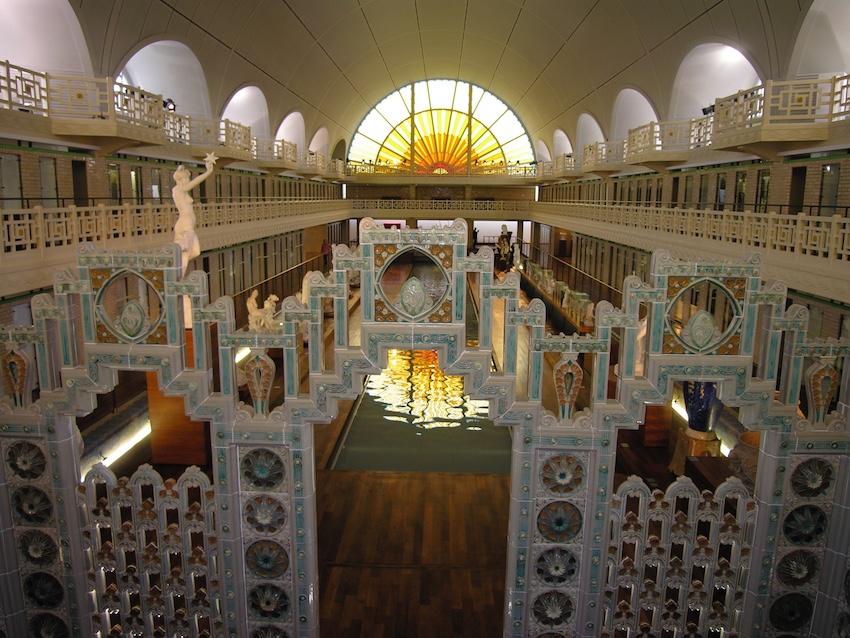BACK HOME
https://www.roubaix-lapiscine.com/expositions/a-venir/les-robert-wehrlin-1903-1964-de-la-piscine/
ARTICLE APPEARED IN MAGAZIN "L'OEIL" N° 745 SOMMER 2021
____________________ FROM SEPTEMBRE 2019 TO 13 APRIL 2020
FROM NOVEMBER 2 2018 TO FEBRUARY 24 2019
____________________
FROM SEPTEMBER 8 TO OCTOBER 28 2018 EXPOSITION
________________ ________________
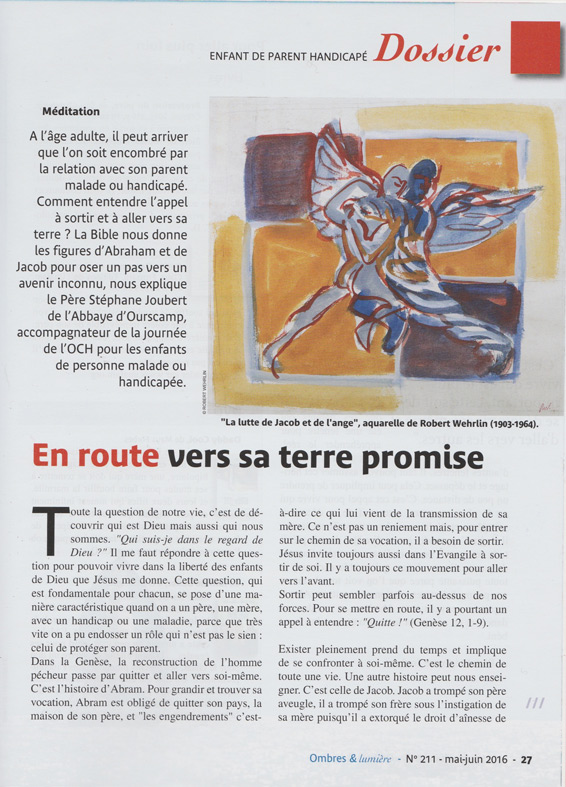 ____________________
____________________
THE WINDOWS OF THE CHURCH OF ELSAU (CH/ZH) BY R.WEHRLIN
BACK HOME
JANUARY - JUNE 2015 "DER HIMMEL BRENNT AM HORIZONT" http://www.kunstmuseum.ch/xml_1/internet/de/application/d8/f115.cfm?action=ausstellung.show&id=100
ARTICLE APPEARED IN THE "SUDKURIER" OF KONSTANZ (GERMANY)
TRIBUTE OF THE ARTIST FOR THE 50TH ANNIVERSARY OF HIS DEATH IN 1964
BACK HOME ARTICLE APPEARED IN THE EXHIBITION CATALOG
____________________ ARTICLE APPEARED IN THE "LANDBOTE" FEBRUARY 26, 2014
__________________ "DEPOLAND"
|
____________________
MUSEUM "LA PISCINE" 59100 ROUBAIX OCTOBER 13 2012 - JANUARY 13 2013 LINK TO REPORT OF 13H ON TF1 FROM 22/12/2012 Journal de TF1 Présentation de l'exposition __________________ ATICLE APPEARED IN MAGAZIN "L'OEIL" IN JANUARY 2013
__________________
____________________ ARTICLE APPEARED IN "LA GAZETTE DROUOT" 07/12/2012
____________________ ARTICLE APPEARED IN "LA VOIX DU NORD" DU 02/12/2012
ARTICLE APPEARED IN "HET LAATSTE NIEUWS" OF BRUXELLES 30/11/2012
____________________ ARTICLE APPEARED IN "LE JOURNAL DU DIMANCHE " 28/10/2012
____________________ LINK TO "artactu.com" 12/11/12 EXHIBITION PRESENTATION IN "LET'S MOTIV" North/Belgium édition 03/11/2012
____________________ ARTICLE APPEARED IN "LE FIGARO MAGAZINE" 02/11/2012
Press release of the MUSEUM "LA PISCINE"
___________________ PROGRAM OF THE MUSEUM "LA PISCINE" from 12/10/2012 to 13/01/2013
|
_________________
_________________
MUSEUM OF "MONT DE PIETE" IN BERGUES (F59)
"La Vérité Du Trait"
october 4 to november 4 2012
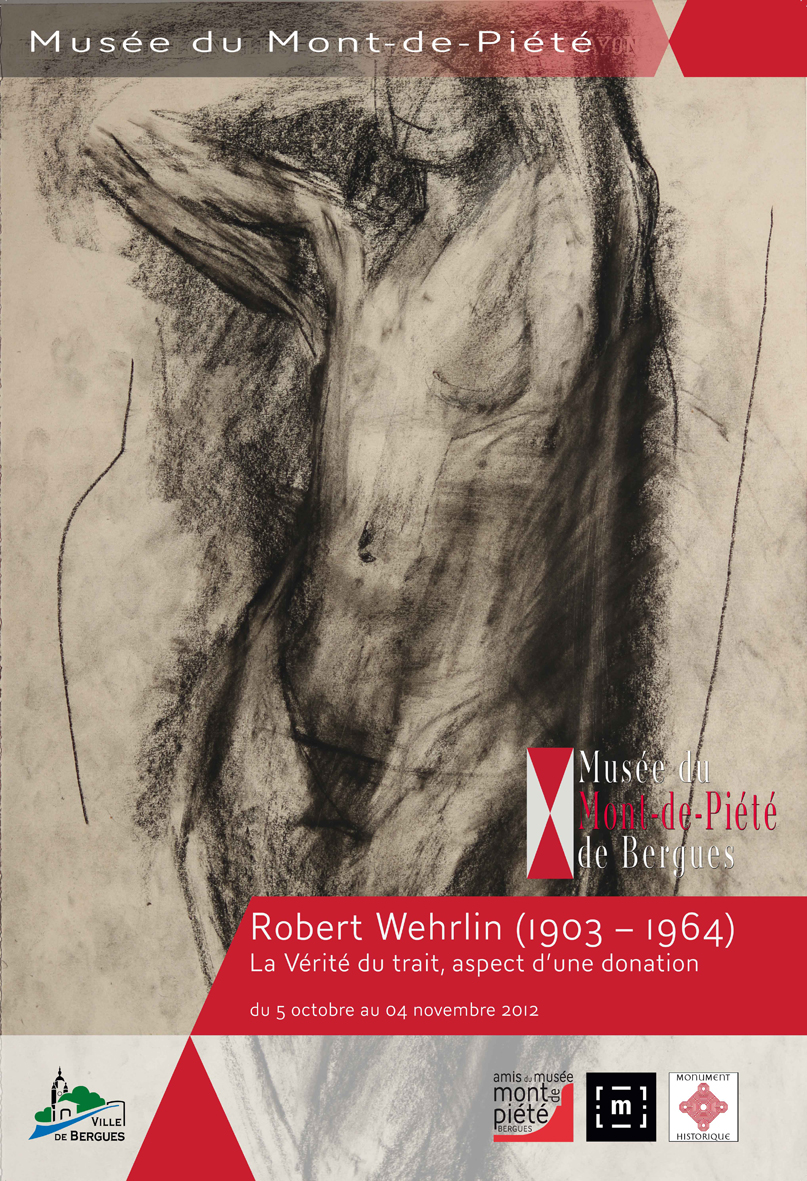
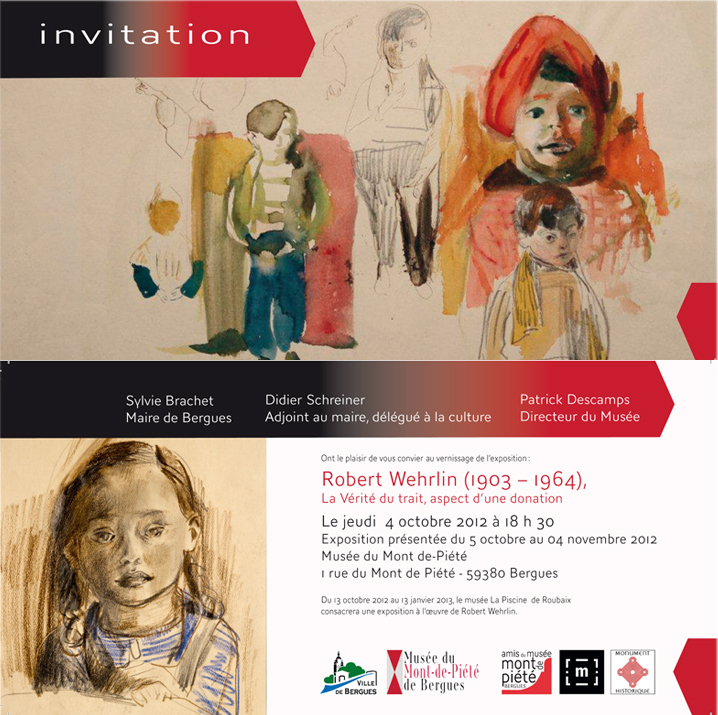
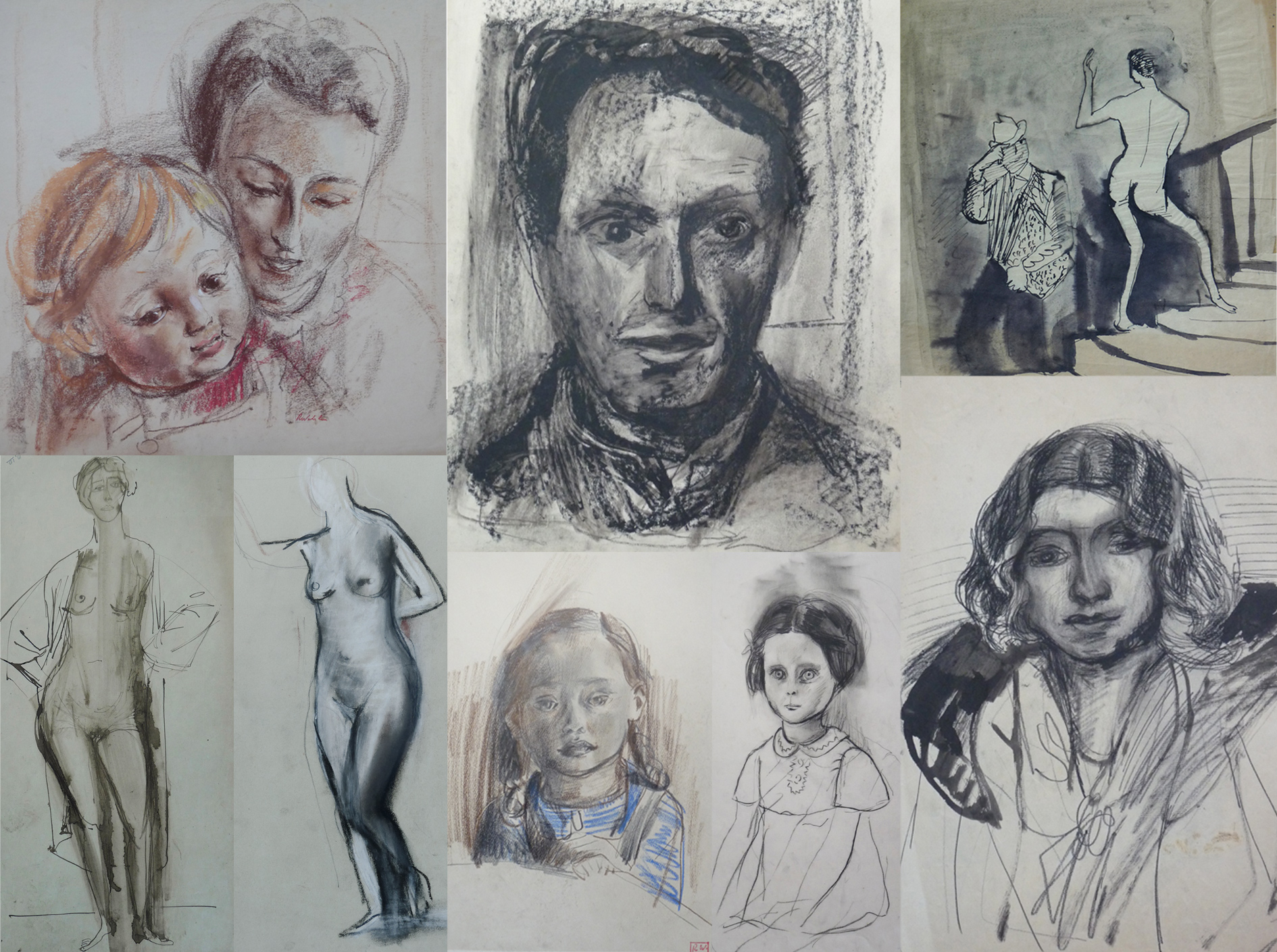
____________________
____________________
ART MUSEUM OF THE CANTON THURGAU KARTAUSE ITTINGEN
Januar 12 2012 to April 22 2012
KONSTELLATION 4
Dietrich, Herzog, Haffter, Roesch, Wehrlin ....
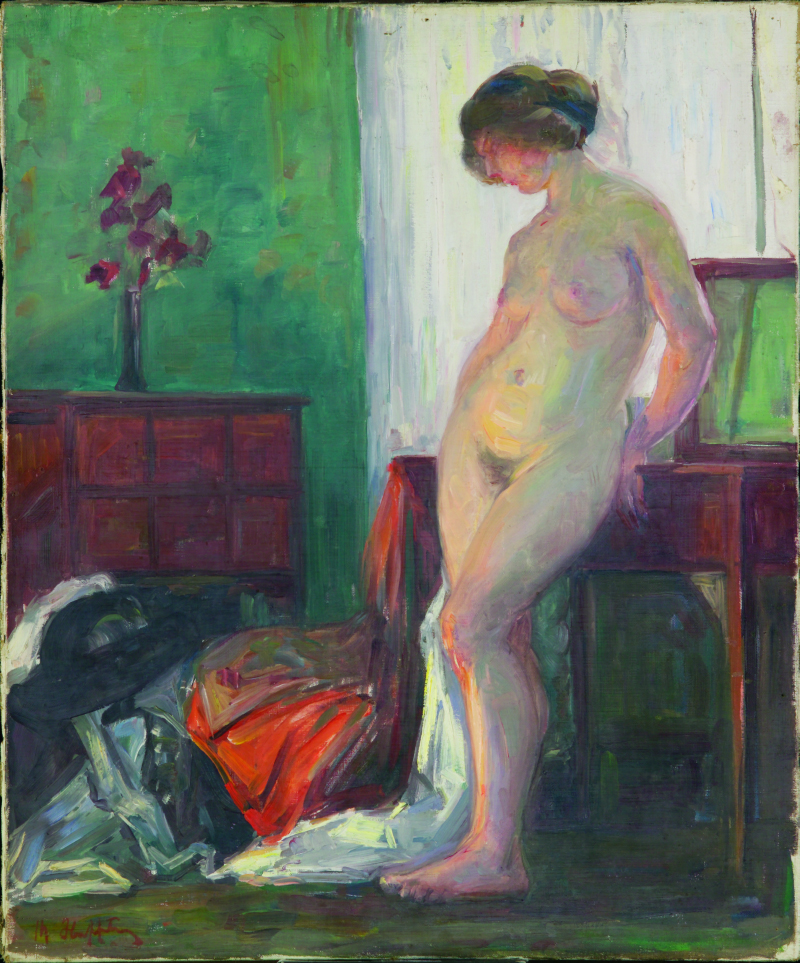 Haffter Martha: Akt |
The ideas of art and craft meet in different places. Until well into the 20th century, the manual mastery of the technical means of painting and sculpture was an indispensable prerequisite for a successful artistic career. Taking a close look and realistically reproducing reality were practiced ad nauseam in the academies. The body in its multitude of positions, the face with its countless expression variations, but also the presence of simple objects in light and space were drawn over and over again until what was seen could be reproduced with a sleepwalking certainty. |
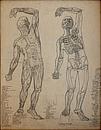 August Herzog: Anathomische Studie 1907, Bleistift auf Papier |
The collection of the Thurgau Art Museum contains astonishing evidence of this practical learning with the pen. A number of early drawings have been preserved by Adolf Dietrich, which the pupil made on the instructions of his elementary school teacher in order to train his drawing skills. There are numerous academic studies by the painter August Herzog from Ermating or by Martha Haffter from Frauenfeld, which arose during his stays at the academies in Munich and Paris. These drawings of naked men and women form, as it were, the invisible foundation of the work of these artists, who are known in Thurgau primarily for their late Impressionist landscapes or for idyllic genre scenes. The hundreds of drawings formed the technical basis for the artistic work of the painters. |
 Carl Roesch: Werbepostkarte mit Till Eulenspiegelmotiv um 1900 |
Art becomes very tangible where artists use their skills to earn a living outside or on the fringes of their art. Ernst Emil Schlatter and Carl Roesch earned good money designing posters and postcards. They financed their training and the start of their careers by using their manual skills as picture makers to promote advertising or the design of everyday objects. During his academy years in Munich, Ernst Kreidolf also produced wanted posters based on photo templates so that he had something to eat at all. |
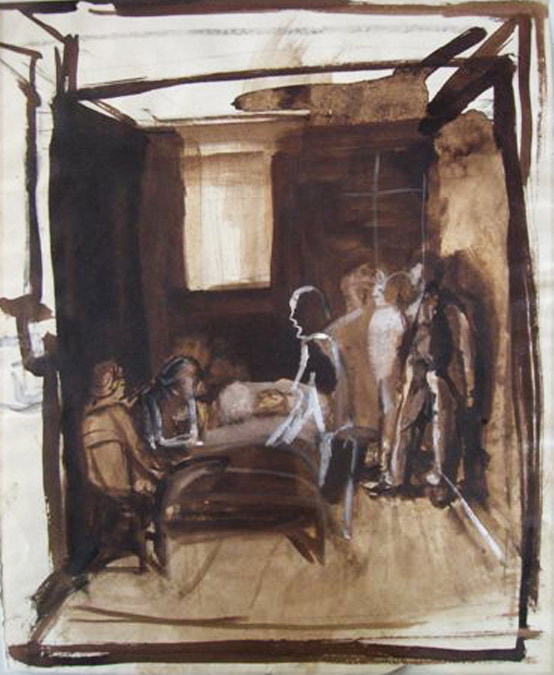 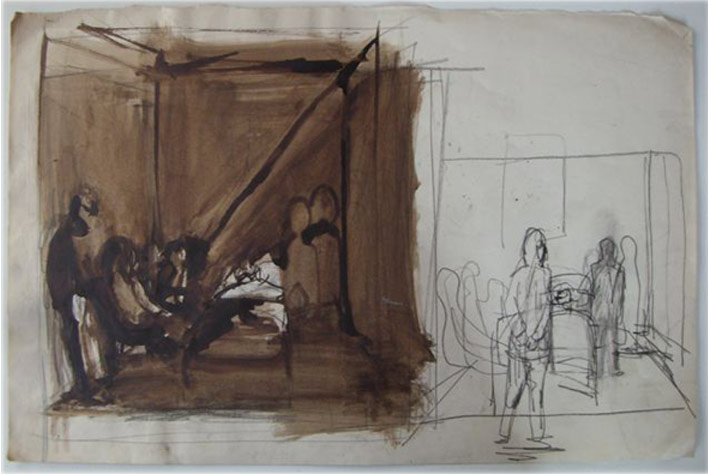 Robert Wehrlin: Studie zu "La mort de mon ami", um 1939, Tusche und Bleistift auf Papier |
An extraordinary group of works by Robert Wehrlin shows that the “handicraft of the artist” can also be understood in a completely different way. For the production of the picture “la mort de mon ami” from 1939, the Thurgau resident, who lives in Paris, drew dozens of preparatory sketches. He meticulously tried out the possibilities of different visual arrangements with pencil and ink. Later he designed a series of lithographs with the same motif. Based on the drawings and graphic sheets, it is possible to understand as a model how an artist develops his motif and how he processes it like a craftsman. |
THURGAUER ZEITUNG: Regionalkultur 16/01/2012 In «Constellation 4», the Thurgau Art Museum is showing drawings and graphic works. «Konstellation 4» zeigt das Kunstmuseum Thurgau Zeichnungen und grafische Werke. WARTH. Every year since 2009, the Thurgau Art Museum has been fetching partly unknown works from the depot, which in a new compilation allow unknown perspectives on certain artists or topics. The fourth of these exhibitions has now opened, showing mainly Thurgau artists who developed in the first 60 years of the 20th century. This «constellation 4» should also help to introduce the 2012 annual theme of the art and Ittinger museums: craft and its significance for art. Life drawing compulsory The most interesting new discovery is Robert Wehrlin (1903–1964), of whom there is a considerable collection in the art museum. He is better known in Winterthur, where he grew up and belonged to the artist group, but also in Paris, where he stayed again and again from 1924 onwards. The only larger exhibition in Thurgau was organized by the Kunstverein Frauenfeld in 1983; it included his graphic work. In the art museum, the focus is now on the oil painting “La mort d'un ami”, for which the artist made countless sketches to grasp this difficult subject, as well as a graphic series. von dem eine ansehnliche Sammlung im Kunstmuseum vorhanden ist. Bekannter ist er in Winterthur, wo er aufgewachsen ist und zur Künstlergruppe gehörte, aber auch in Paris, wo er sich von 1924 an immer wieder aufhielt. Die einzig grössere Ausstellung im Thurgau hat der Kunstverein Frauenfeld 1983 veranstaltet; sie beinhaltete sein grafisches Werk. Im Kunstmuseum steht jetzt das Ölbild «La mort d'un ami» im Mittelpunkt, wofür der Künstler unzählige Skizzen anfertigte, um dieses schwierige Thema zu fassen, wie auch eine grafische Serie |
____________________
____________________
Article appaered in the "LANDBOTE" de Winterthur (Switzerland) may 3th 2007
Wandbilder auf Wanderschaft
Murals looking for an other place
by Gerhard Piniel

Décorations
murales aux usines SULZER de Winterthur 1961
Wall decorations at the SULZER factories in Winterthur 1961
Travail et Temps libre - Arbeit und Freizeit- Work and Leisure
4 x 27 m

Tranquillité
et Mouvement - Ruhe und Bewegung - Rest and Movement
3,2 x 24 m
After demolition of the Sulzer factories in 2009 these 2 decorations "seek" a new wall to revive, they are
currently stored in a factory in Lichtenstein
http://www.wehrlin.li
Two artistically valuable murals by Robert Wehrlin have been rescued from the welfare house. You are looking for a new place to stay. |
____________________
____________________
Article appeared in the "Thurgauer Zeitung" (Switzerland) 8 mars 2003 Fascinated by people Works by Robert Wehrlin in the Museum Bischofszell
The exhibition in Bischofszell shows the diversity of the artist. Oil paintings, graphics and documents give an insight into the work of Robert Wehrlin and into his artistic development. Whether very representational or abstract - the works invite you to look at them for a longer period of time. There are always new details to be found. Some pictures are very colorful, while others are rather gloomy, thoughtful and yet fascinating. The classroom in the museum is brought back to life through the portraits and drawings of many children. «We lived across from a children's home in Paris. My father captured many of the children in his pictures, »says Jacques Wehrlin. But the painter not only portrayed strange children, but also his own son several times. "He often integrated my mother into his drawings, even though she wasn't there." He seemed fascinated by people, who are often the focus of his works. The letters that the artist wrote to his godchild, which are a mixture of drawing and writing, exude a special attraction. Excerpts from it can be admired in the museum. Also interesting are the caricatures that Wehrlin made during the Second World War and thus targeted Adolf Hitler. |
____________________
Article appeared in the "Thurgauer Zeitung" (Switzerland) 6 mars 2003 For Robert Wehrlin, painting was life Robert Wehrlin, whose family comes from Bischofszell, is one of the well-known Swiss painters of the 20th century. On the occasion of his 100th birthday, the Bischofszell Museum is showing a retrospective of his work. Bischofszell - First, Robert Wehrlin, who grew up in Winterthur, began studying law. In Davos, where his mother lived for 20 years because of her tuberculosis, he met the charismatic artist Ernst Ludwig Kirchner. This fateful encounter finally determined Wehrlin's life: painting. The law course was given up against the will of the mother in order to be able to devote herself exclusively to art. In 1924 Robert Wehrlin moved to Paris, where he rented a cheap but uncomfortable and unhealthy studio and studied at various academies. Wehrlin's early works were strongly influenced by Ernst Ludwig Kirchner's Expressionism. However, this subjectivist artistic form of expression contradicted the attitude to life that he experienced in Paris. Under the influence of Henri Matisse's art, Wehrlin's painting became more surface-oriented, the colors became richer and brighter, and questions of composition and form received increased attention. In the post-war years, Wehrlin received a number of public contracts for schools and churches. The techniques he used were the sgraffito, the tapestry and finally the stained glass window. Steps to abstraction In these pictures that zeitgeist can be seen and felt, which believed to be on the move to new, unlimited possibilities, which was not only noticeable in the art world, but also in science. Robert Wehrlin, however, was a restless, overly interested person to dwell on just one style. Partly at the same time as the abstractions, an abundance of children's portraits was created, which reveal a fundamental love for people and a great deal of empathy. Expressive children's portraits Anyone who wants to find out something about him as a person behind the artist Wehrlin will sense this from his pictures. The enormous examination of techniques and styles indicates an alert, intelligent and empathetic mind that perceives everything, deals with everything. Wehrlin was a person who was curious and positive about what he saw, who looked for a hidden truth behind what was superficial and who designed and implemented it artistically. He dealt unpretentiously with his artistry: He did not live his biography, but his life, which he devoted above all to art. For him painting was life and life movement. |
